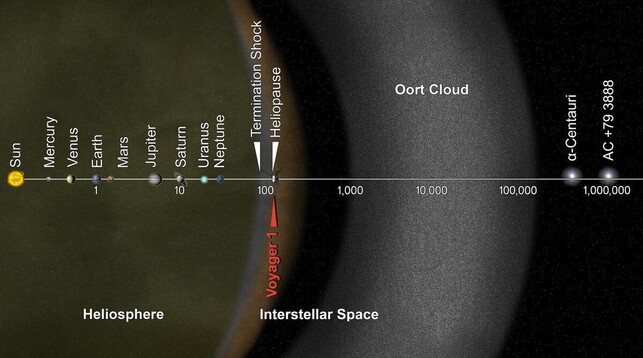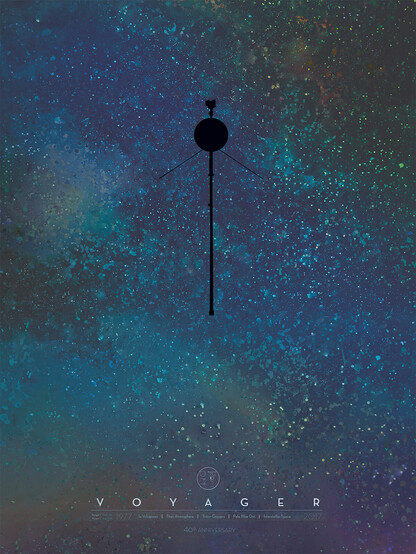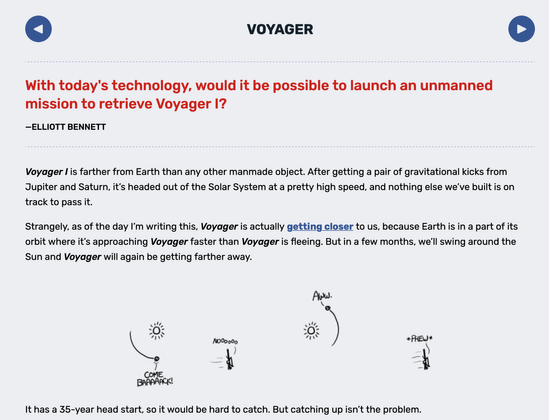The Voyager 1 space probe was launched from Cape Canaveral #OTD in 1977, a few weeks after Voyager 2.
Now it's the most distant human-made object – about 14.96 billion miles from Earth, racing away from us at 38,000 miles per hour with respect to the Sun.
Images: NASA/KSC/JPL
Voyager 1’s outbound trajectory took it by Jupiter in 1979, then past Saturn the next year.
This time lapse of the Jupiter approach consists of 66 frames, take once per Jovian day. Look carefully for moons darting past, shadows flickering across the face of the planet.
Credit: NASA/JPL
Voyager 1 discovered three new moons (Prometheus, Pandora, and Atlas) shepherding Saturn's A- and F-rings.
It also uncovered a wealth of new information about basic properties of Saturn's moon Titan, from size to atmospheric composition.
Image: NASA/JPL-Caltech
The trajectory that gave Voyager 1 the best view of Titan (a mission priority) sent it out of the ecliptic and towards interstellar space.
Ten years later, in 1990, Carl Sagan suggested that the probe should point its camera back at the solar system for a family portrait.
The sixty frame mosaic captured by Voyager 1 on Valentine's Day of 1990 shows Jupiter, Earth, Venus, Saturn, Uranus, and Neptune.
https://voyager.jpl.nasa.gov/galleries/images-voyager-took/solar-system-portrait/
Image: NASA/JPL-Caltech
The frame containing Earth shows a dramatic optical artifact because we are near the Sun in the camera's field of view.
That's the Pale Blue Dot. Suspended in a sunbeam, captured from a distance of 40 AU by a probe out on the edge of darkness.
After that, mission scientists turned off Voyager 1's cameras to save power.
Image: NASA/JPL
By 1998, Voyager 1 was at 68 AU, further out than Pioneer 10.
Around 2004, at about 94 AU from the Sun, it crossed the termination shock and entered the heliosheath.
And in 2012, at 121 AU from the Sun, Voyager 1 crossed the heliopause and entered interstellar space.
But Voyager 1 hasn't left the solar system. At 161 AU, its current distance from the Sun is a fraction of Sedna's 936 AU aphelion (though it is currently further out than the minor planet).
And it's nowhere near the inner edge of the Oort cloud, thousands of AU from the sun.
This chart shows Voyager 1's location in 2013, with distance from the sun plotted on a log scale. It is at roughly the same place today, since the next step on the scale jumps from 100 to 1000 AU.
Image: NASA/JPL-Caltech
So even though Voyager 1 has a long way to go, I wouldn't fault anyone for describing it as being at "the edge of the solar system."
It’s the fastest and most distant thing humans have ever made, it’s okay to sound a little dramatic.
When we receive data from Voyager 1, we’re picking up a signal sent about 22 hours and 19 minutes ago.
Of all the objects humans have hurled into space, Voyager 1 is the closest to being one full light-day away from us.
The speed of light is 3 x 10⁸ m/s, and Voyager 1 is traveling at about 38,000 mph with respect to the Sun. A few conversions turns that into about 0.5 light-hours per year. So we're a little over three years away from Voyager 1 being one full light-day away from us.
Six of the probe’s scientific instruments have been powered down. The other four will be shut off over the next few years. When it reaches a distance of one light-day we’ll still be able to communicate with it, but it won't have much to say.
Voyager 1 will remain in range of our Deep Space Network for some time after that. Eventually, though, it won't be able to muster enough power for a detectable signal, and will quietly sail off into darkness.
https://voyager.jpl.nasa.gov/downloads/
Image: NASA/JPL-Caltech
@mcnees I don't understand why we don't send out another few probes with much better technology that can last much much longer and provide SIGNIFICANTLY better data.
@CitizenFortress @mcnees I think it's chiefly lack of political will. It would be awesome as a prestige project for a medium sized country.
@skyglowberlin @mcnees Despite how much I really don't like Musk now, I think having SpaceX is a huge huge push in the right direction. Getting it out the hands of the government and into the hands of private entity is the best option forward, as business customers and businesses seem to push things much farther than governments do.
@CitizenFortress @mcnees Beg to differ, at least with respect to low Earth orbit. If you're chasing profit, the possibility of Kessler syndrome in 10-20 years isn't something you're going to worry much about (more than half of all artificial satellites currently in orbit are Starlinks). But losing LEO would be an absolute catastrophe for humanity. (1/2)
@CitizenFortress @mcnees There are similar issues with use and/or exploitation of solar system resources. Does the first company that lands on the moon get to claim the entire thing? What about any given asteroid?
There is certainly many places for business involvement, but space is a place where species-wide cooperation is absolutely essential.
@mei @mcnees @CitizenFortress Sure, but clever minds can work out clever orbits at later dates, and ion drives seem a possibility (at least according to What If: https://what-if.xkcd.com/38/)
@CitizenFortress @mcnees
Think of it this way: We will. We are waiting for the technology to get THAT much better.
Also, space tech is hard. The smaller the features the more vulnerable it is to failure and disruption by small particles. When was the last time a machine you used lasted 47 years without replacing a part.
@mcnees Thanks, I really enjoyed this thread and it sent me down a Oort Cloud versus Kuiper Belt rabbit hole.
@mcnees I love how we’re even littering in SPACE though.
@mcnees It's really quite headache-inducing to hold in my head the thoughts "A light-day away" and "Hasn't gotten near leaving the solar system's gravitational influence yet" simultaneously.
@mark@mastodon.fixermark.com @mcnees@mastodon.social Multiply that by 365 and suddenly a light year doesn’t seem very large at all
@mcnees The radio signal received is 10e-16 watts. One millionth of one billionth of a watt. As incredible as NASA's spacecraft designers are, people often overlook how incredible the Deep Space Network is.


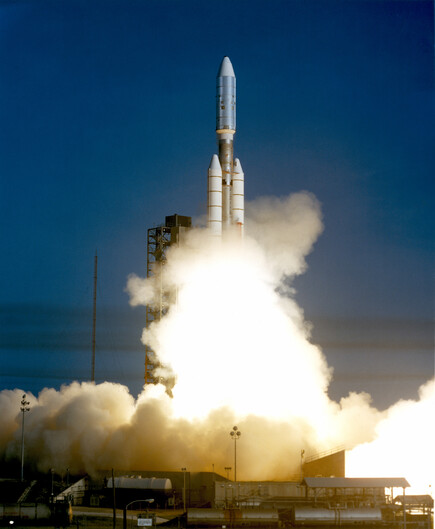
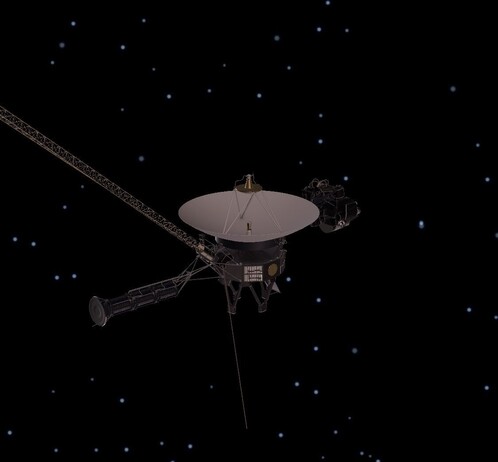
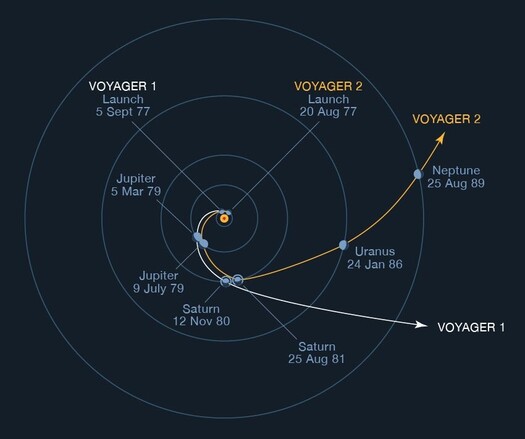
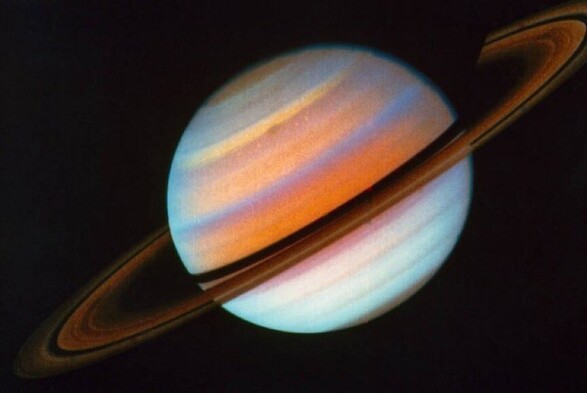
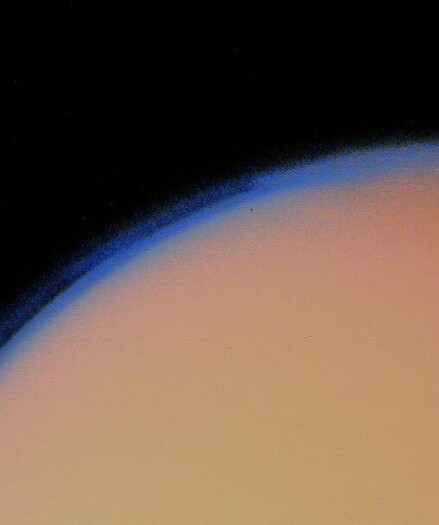

![The "pale blue dot" photo. It shows three or four colored beams of light – optical artifacts – passing from the left side of the image to the right. The background is dark, empty space. In the topmost light beam is a single pale blue pixel. That's Earth. Sagan's quote is printed on the image. It reads ""We succeeded in taking that picture [from deep space], and, if you look at it, you see a dot. That's here. That's home. That's us. On it, everyone you ever heard of, every human being who ever lived, lived out their lives. The aggregate of all our joys and sufferings, thousands of confident religions, ideologies and economic doctrines, every hunter and forager, every hero and coward, every creator and destroyer of civilizations, every king and peasant, every young couple in love, every hopeful child, every mother and father, every inventor and explorer, every teacher of morals, every corrupt politician, every superstar, every supreme leader, every saint and sinner in the history..."](https://files.mastodon.social/media_attachments/files/111/013/967/807/962/662/small/1a4353daadb01d28.jpeg)
